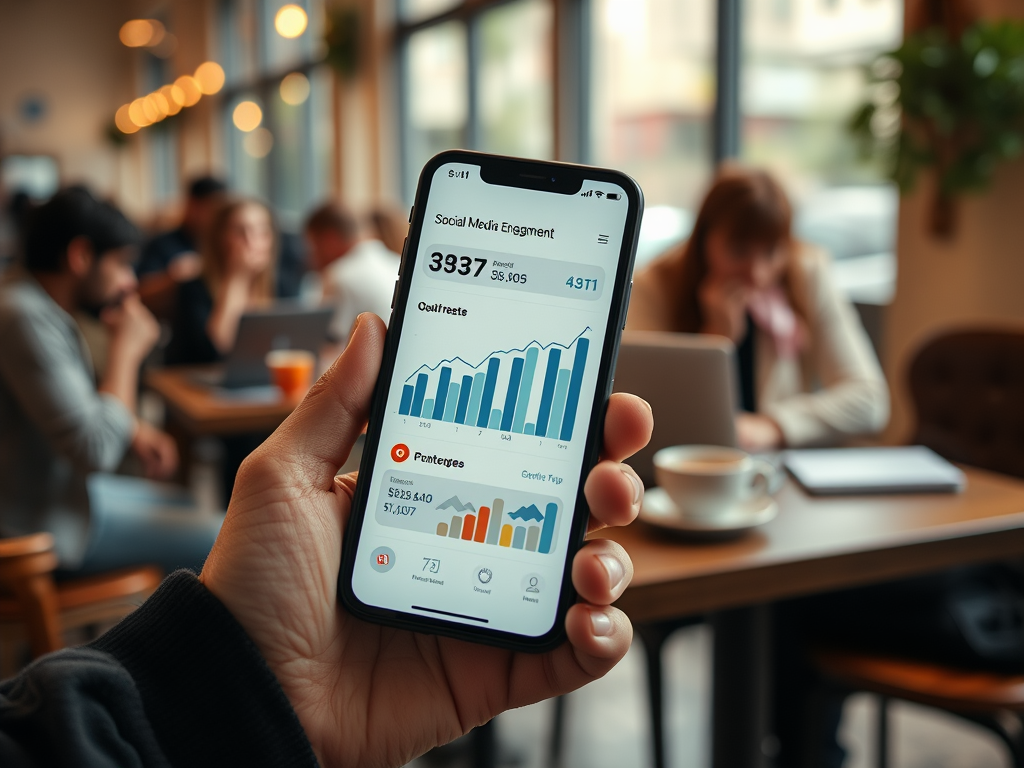In an age where social media is a cornerstone of digital marketing, understanding its financial impact has never been more crucial. Companies invest substantial resources in their social media strategies, yet many struggle to measure the return on these investments accurately. Measuring Social Media ROI (Return on Investment) provides insights into whether your strategies are paying off and helps in optimizing future initiatives. By comprehensively analyzing engagement, conversions, and brand awareness metrics, businesses can make informed decisions that affect overall performance. This not only justifies social media budgets but also helps align social activities with broader business objectives. Let’s explore the intricate process of calculating social media ROI and transforming data into actionable insights.
Understanding Social Media ROI

Measuring Social Media ROI is crucial for businesses to determine the effectiveness of their social media strategies. Social media platforms are great tools for engagement, but understanding the value they bring is key to making informed decisions. Calculating ROI allows businesses to allocate resources effectively while justifying their spending on social initiatives. It is essential to look beyond mere follower count and delve deeper into metrics that drive engagement, conversion, and retention. With a clear view of returns, companies can optimize their strategies for improved outcomes. Embracing this analytical approach equips organizations with the knowledge to enhance their social media presence.
Why Measuring ROI is Important

Calculating your social media ROI helps businesses for several reasons. Firstly, it enables the allocation of resources more effectively, ensuring that funds are invested in methods that deliver results. Secondly, it justifies social media spending, making it easier to communicate the value of these platforms to stakeholders. Thirdly, understanding your ROI helps optimize social media strategies to drive better performance, allowing for data-driven decisions. Moreover, strong ROI metrics help affirm the significance of social media in reaching targets like increased sales and enhanced brand loyalty. Without these measurements, companies may risk underestimating the value of their social media efforts.
Key Metrics to Consider
When measuring social media ROI, several metrics should be monitored that directly contribute to your overall assessment. Here are some critical areas to focus on:
Engagement Metrics
- Likes, shares, and comments
- Follower growth
- Post reach
These metrics reflect how users interact with your content, indicating the effectiveness of your posts. Tracking them reveals whether your audience finds value in what you share and can guide your content strategy effectively.
Conversion Metrics
- Click-through rates
- Lead generation statistics
- Sales generated directly through social media campaigns
Conversion metrics assist in determining the number of actions taken by users after engaging with your content. By analyzing these metrics, you can ascertain which strategies are effective in driving user actions and sales.
Brand Awareness Metrics
- Mentions and tags
- Sentiment analysis
- Share of voice compared to competitors
Brand awareness is another essential aspect of ROI measurement. Key indicators allow you to evaluate how well your brand is perceived in the marketplace and identify areas for improvement.
| Metric Type | Example Metrics | Purpose |
|---|---|---|
| Engagement | Likes, Shares, Comments | Gauge user interaction |
| Conversion | Sales, Leads Generated | Measure direct impact on revenue |
| Brand Awareness | Mentions, Sentiment | Assess overall brand perception |
Calculating Social Media ROI
To effectively measure social media ROI, follow these basic steps:
- Define Your Goals: Identify clear objectives for your social media campaigns, such as increasing brand awareness, generating leads, or boosting sales.
- Track Costs: Calculate all expenses related to social media marketing, including content creation, advertising costs, and personnel salaries.
- Measure Returns: Assess the financial returns from your social media activities. This might include direct sales, lead conversions, or even cost savings.
- Apply the ROI Formula: Use the formula: ROI = (Net Profit / Total Investment) x 100
Tools and Techniques for Measuring ROI
Various tools can aid in tracking metrics and calculating ROI more effectively. Some popular options include:
- Google Analytics: For tracking website traffic and conversion rates.
- Social Media Management Tools: Programs like Hootsuite or Buffer can provide insights on engagement and reach.
- Custom UTM Parameters: Use these for tracking specific campaigns across different social media platforms.
Challenges in Measuring Social Media ROI
While the importance of ROI is clear, businesses may face challenges in obtaining accurate figures. One major hurdle is the difficulty in attributing sales to social media efforts, as buyers often engage with multiple touchpoints before making a purchase. Furthermore, variations in metrics across different platforms can lead to inconsistencies that complicate the measurement process. Additionally, misalignment of social media goals with broader business objectives often clouds clarity in ROI calculations. These challenges necessitate a well-structured approach for effective interpretation of data.
Conclusion
Measuring social media ROI is a multifaceted process that involves defining clear goals, tracking relevant metrics, and utilizing the right tools. By understanding and calculating ROI, businesses can effectively justify their social media investments and optimize strategies, all contributing to the bottom line. Embracing a systematic approach leads to better decision-making and enhanced social media performance. The journey may be complex, but the insights gained are invaluable for a business’s growth. Ultimately, honing the social media ROI measurement process will empower marketers and elevate brand presence in an ever-competitive landscape.
Frequently Asked Questions
- What does ROI stand for? ROI stands for Return on Investment, a metric used to measure the profitability of an investment.
- How often should I measure social media ROI? It’s advisable to measure ROI regularly—monthly or quarterly—to adjust strategies promptly based on performance.
- What is a good ROI for social media marketing? A positive ROI, typically above 100%, indicates that your social media efforts are generating profit.
- Can I measure brand awareness as part of ROI? Yes, brand awareness metrics like mentions, reach, and sentiment play an essential role in calculating overall ROI.
- What tools are best for measuring social media ROI? Popular tools include Google Analytics, Hootsuite, Buffer, and Sprout Social for tracking engagement and conversion metrics.



